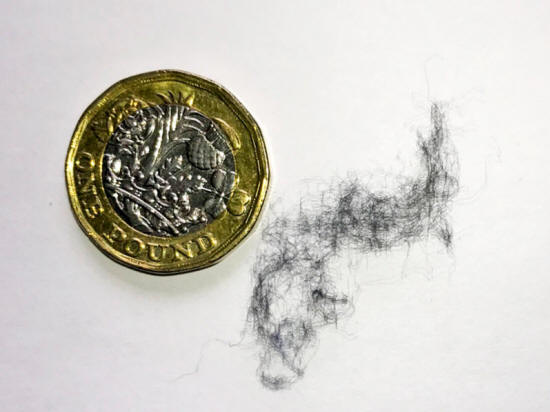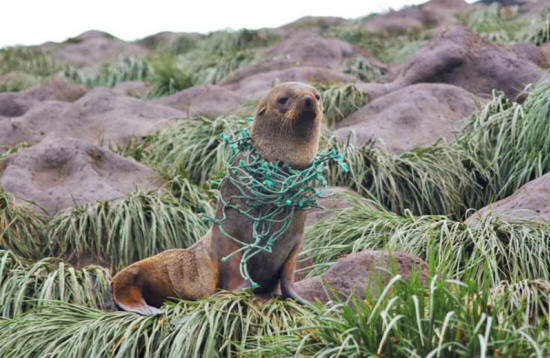|

June 19, 2017
from
PHYS Website

Microplastic fibres
collected
from the Southern Ocean.
Credit:
Catherine Waller
The levels of microplastic particles accumulating in
the Antarctic
are much worse than expected, a team of experts has warned.
The continent is considered to be a pristine wilderness compared to
other regions and was thought to be relatively free from plastic
pollution.
However new findings by
scientists from University of Hull and
British Antarctic
Survey
(BAS) have revealed that recorded levels of microplastics are five
times higher than you would expect to find from local sources such
as research stations and ships.
Microplastics are particles less than 5mm in diameter and are
present in many everyday items such toothpaste, shampoo, shower gels
and clothing.
They can also result from the breakdown of plastic
ocean debris.
The results
(Microplastics
in the Antarctic Marine System - An Emerging Area of Research),
published in the Journal Science of the Total Environment,
have raised the possibility that plastic originating from outside
the region may be getting across the
Antarctic
Circumpolar Current,
historically thought to be almost impenetrable.
Lead author Dr Catherine Waller, an expert in ecology and
marine biology at University of Hull, says:
"Antarctica is
thought to be a highly isolated, pristine wilderness. The
ecosystem is very fragile with whales, seals and penguins
consuming krill and other zooplankton as a major component of
their diet.

A seal entangled in plastic netting on Bird Island.
Credit: Claire Waluda
"Our research highlights the urgent need for a coordinated
effort to monitor and assess the levels of microplastics around
the Antarctic continent and Southern Ocean."
The
Southern Ocean covers
approximately 8.5 million square miles and represents 5.4% of the
world's oceans.
The region is under
increasing threat from fishing, pollution and the introduction of
non-native species, while climate change is leading to rising sea
temperatures and ocean acidification.
Concern is growing about
pollution from floating plastic debris, which can be become
entangled with or ingested by wildlife.
Microplastics enter the oceans via wastewater and through the
breakdown of plastic debris and have been shown to be persistent in
surface and deep ocean waters and in deep sea sediments.
Tests have shown that a
single polyester fleece jacket can release more than 1,900 fibres
per wash, while around half of discarded plastics are buoyant in
seawater and may be subject to degradation by ultraviolet radiation
and decomposition.
More than half of the
research stations in the Antarctic have no wastewater treatment
systems, the research reports.
It's estimated that up to 500kg of microplastic particles from
personal care products and up to 25.5 billion clothing fibres enter
the Southern Ocean per decade as a result of tourism, fishing and
scientific research activities.
While this is negligible
at the scale of the Southern Ocean, the researchers say it may be
significant at a local scale.
Co-author Dr Huw Griffiths, a marine biogeographer with
British Antarctic Survey, says:
"Our understanding of
the sources and fate of plastics in these waters is limited at
best.
Given the low numbers
of people present in Antarctica, direct input of microplastic
from wastewater is likely to be below detectable limits at a
Southern Ocean scale.
"However, microplastics generated from degradation of larger
pieces of plastic or transferred into the Southern Ocean across
the polar front may be a major contributor to the high levels of
microplastics recorded at some open ocean sites.
Biologist Dr Claire
Waluda, a co-author at British Antarctic Survey, says:
"We have monitored
the presence of large plastic items in Antarctica for over 30
years.
While we know that
bigger pieces of plastic can be ingested by seabirds or cause
entanglements in seals, the effects of microplastics on marine
animals in the Southern Ocean are as yet unknown".
"This paper represents an excellent first step towards
recognizing the presence of microplastics in Antarctica and
allows us to call for international effort in monitoring the
situation whilst it is still in its earliest stages".
|



